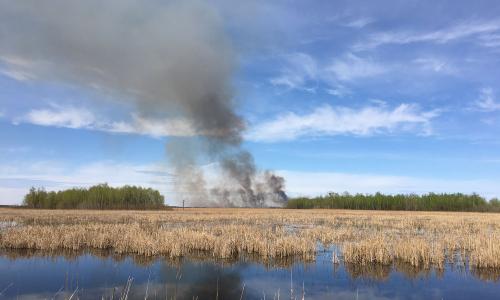Greener Eggs and Ham reviews alternative swine and chicken production and marketing, complementing our earlier report Greener Pastures that examined the multiple benefits of grass-fed beef and dairy cattle. Unlike ruminants such as cattle that have several stomachs and symbiotic microbes that break down the plant fiber component cellulose, hogs and chickens cannot survive on diets that contain only grass and other forages. Because of this, some of the benefits of pasture production are not the same for non-ruminants compared to ruminants. For example, the levels of beneficial omega-3 fatty acids are generally not different in pasture-raised versus conventionally raised pork and poultry.
Pork, poultry and eggs are a significant part of U.S. food production and consumption, and most food animals are raised in large confinement systems (CAFOs) and fed only grains and legumes along with antibiotics that hasten weight gain. This poses many problems for the environment, farmers, farm workers, and animal and public health.
To address these problems, innovative swine and poultry producers and researchers who take a holistic view of animal production, and who enjoy the challenge of working with nature rather than trying to control it, are developing production systems that give animals access to the outdoors and the opportunity to gain some nutrition from forage. Deep bedding that keeps pigs warm in open pens, and easily moved structures that allow chickens to live on pasture are just two of many new elements they have devised. A variety of labels has been applied to the products coming out of these systems including organic, natural, free range, pasture-raised and others. As demand for pasture raised products has increased, so has the need for clearer labels and stronger standards.
In contrast to CAFOs, which produce far greater quantities of manure than can be used on nearby fields, the objective in alternative systems is to spread the manure produced by animals on pasture over as large as space as possible. This lessens the contamination of groundwater with nitrates, pesticides, heavy metals, and antibiotics, and decreases the eutrophication of waterways that causes fish and plant die-off. The air in pastured animal areas is cleaner than in CAFO areas. Pasture systems also require less grain production, mitigating problems like soil erosion, pesticide residues in food and water, and nitrogen runoff. In fact, well-managed pastures can improve soil quality.
The benefits to producers who raise hogs and poultry on pasture include lower costs, lower capital needs, the ability to produce in season, less exposure to airborne hazards, and fewer objections from neighbors regarding odors and pollution. Consumers benefit from less exposure to antibiotic-resistant microbes, better tasting products (mainly due to the use of heritage breeds of hogs and chickens), and the knowledge that less environmental damage occurred in the production of the food.
UCS has a strong interest in supporting alternative systems that are good for humans, animals and the environment alike. We recommend that more attention be paid to research and policy needs in order to spur further adoption of these important alternative production models.




